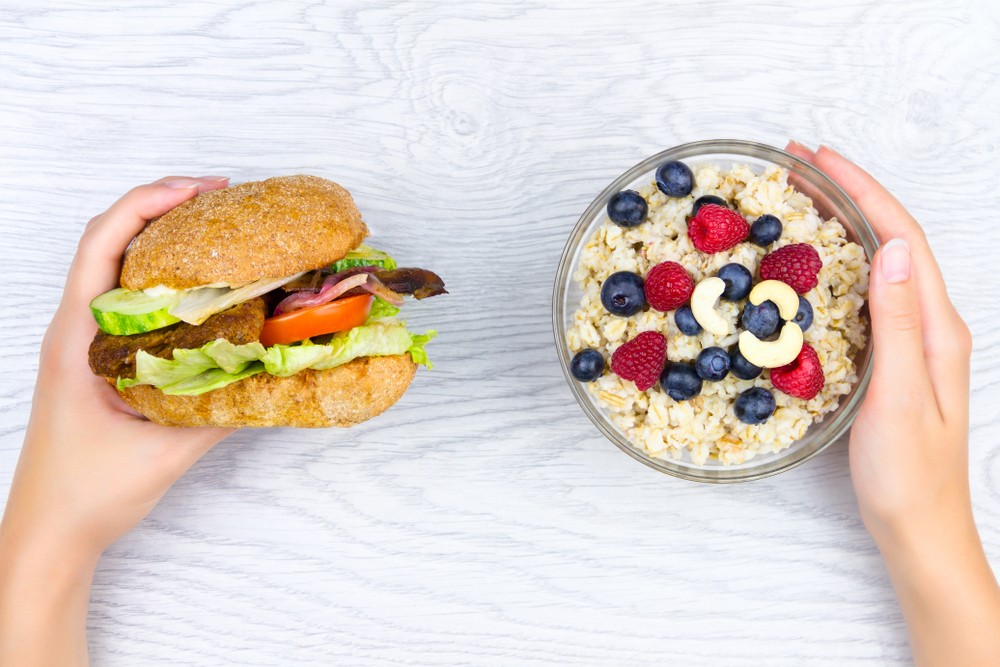
The problem with "Junk Food"

Published on March 2, 2021
98% of Australians eat about 3,000 kilojoules of non-essential food every day. That's the equivalent of 20 small solid Easter eggs.
As health professionals, we all know that the diets of Australians need to change. Why? Because what they're eating is making many of them sick.
The Australian Institute of Health and Welfare tells us that in 2015, 7.3% of the total burden of disease in Australia was due to poor diet. That translates to millions of people suffering from avoidable illnesses over the last six years alone.
Clearly there's room for improvement, and there's one area where we can really make an impact with our patients and clients: junk food or also known as discretionary foods.
By reducing our intake of these discretionary foods we can actually make more room for healthy foods in our diet, which is almost like a double benefit in terms of achieving a healthier diet quality
What do we mean by 'discretionary foods'?
Discretionary foods are high in saturated fats, sugar, salt or alcohol, and low in fibre. If that alone is not enough to encourage change, the real issue is that Australians, regardless of age, gender or body sizes, are massively over-consuming these foods. And they are doing this at the expense of foods that protect against disease like vegetables, fruits, whole grains, healthy fats and quality proteins. These are the foods recommended in the Australian Guide to Healthy Eating. Yet around 50% of people don't meet the fruit guidelines, and an incredible 93% don't meet the vegetable guidelines.
By reducing our intake of these discretionary foods we can actually make more room for healthy foods in our diet, which is almost like a double benefit in terms of achieving a healthier diet quality.
'Five-to-one' energy-dense serves
Across the media this week, CSIRO have done analysis of the Australian National Nutrition Survey showing that the average Australian is eating over FIVE serves of discretionary foods every day, well above the recommended amount. This is twice the recommendation.
These foods are energy-dense, but nutrient-poor, so while they make up more than a third of the energy many people take in, they're not providing much nutrition.
But food choices are based on cultural, environmental, social and personal preferences, so as health professionals, how do we encourage Australians to eat less of the non-essential stuff, and more of the good stuff?
Why food choices matter
Poor nutrition and excess body weight can lead to higher risks of cardiovascular disease, type 2 diabetes, chronic kidney disease, osteoarthritis and some types of cancer. This health burden not only has a personal cost but is a huge drain on public finances.
But food choices are based on cultural, environmental, social and personal preferences, so as health professionals, how do we encourage Australians to eat less of the non-essential stuff, and more of the good stuff?
There’s no one-size-fits-all approach. Public health messages have tried to shift behaviours, for example the "Go for 2 and 5" campaign, the "Swap it, Don't Stop it" campaigns. Others have called for policy changes, like a sugar tax or food labelling laws, while others tried to educate from early childhood, such as "Crunch and Sip" or "Fruit Reboot".
"Do you want fries with that?"
And we're up against some stiff competition. For decades now, food manufacturers have been conditioning our society to believe that discretionary foods are an essential part of life.
This commercial pressure makes persuading people to give up discretionary foods not only extremely difficult but impractical.
The good news is, Australians don't have to give them up, they just need to eat less of them.
Improving awareness, knowledge and supporting behaviour change are the core components to making a change
How we can help
Improving awareness, knowledge and supporting behaviour change are the core components to making a change. Helping people understand what’s in the food they eat is key, and there are plenty of tools for this, like the CSIRO diet score.
Then there are practical tips to help replace discretionary foods with nutritious foods. Some strategies you can give your patients or clients include:
- having a few days off from your favourite discretionary food each week
- keep tempting foods out-of-sight and out-of-mind
- reduce portion sizes (yet still savour the flavour!)
To support us in this endeavour, CSIRO Total Wellbeing Diet has launched the new Junk Food Analyser 👉 www.junkfoodanalyser.com interactive tool. This is a free, online tool to help Australians understand their discretionary food intake and improve their eating habits.
I encourage you to try the tool. It's one more way to help our patients and clients cut back from 20 Easter eggs a day to four...
